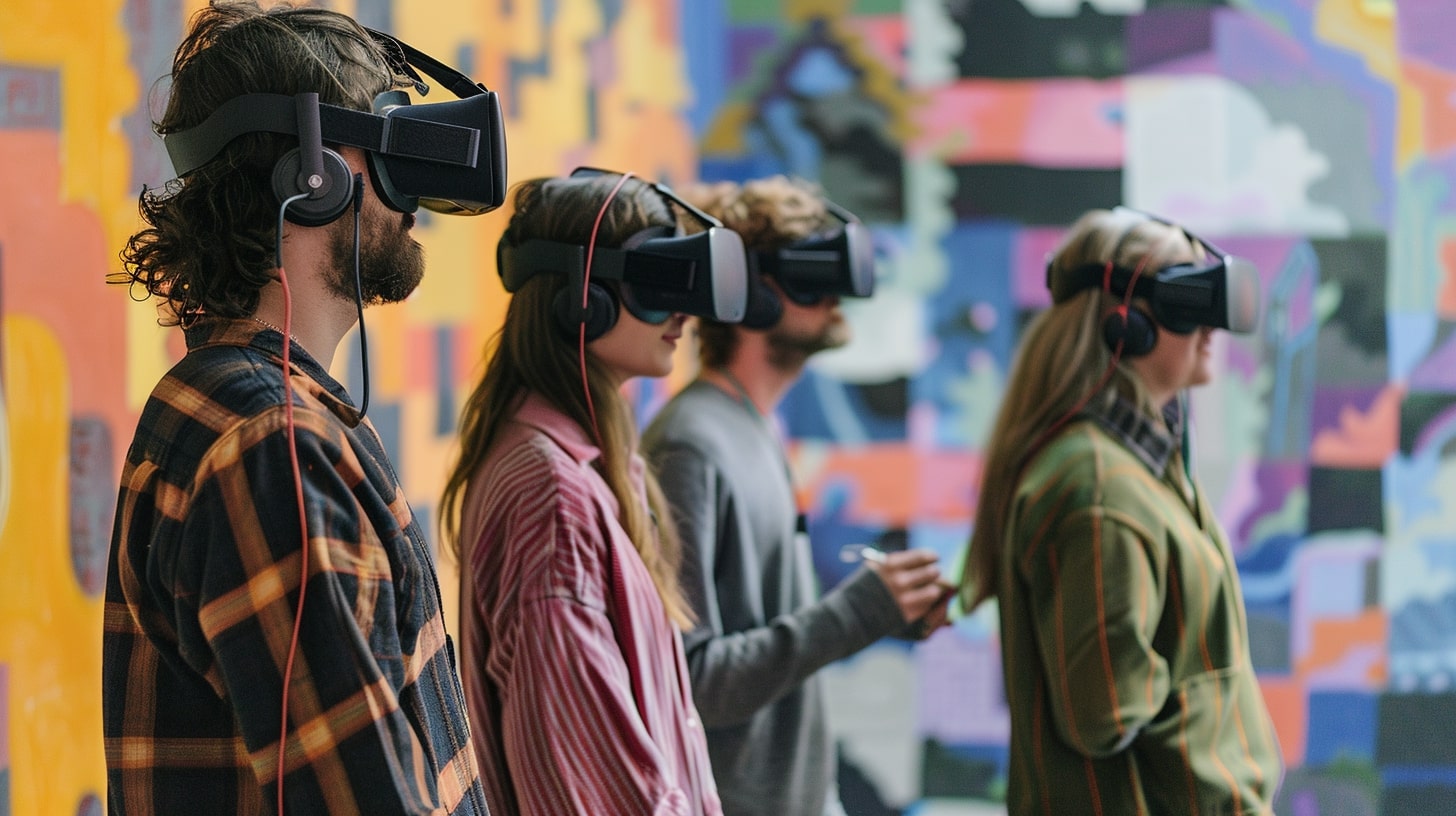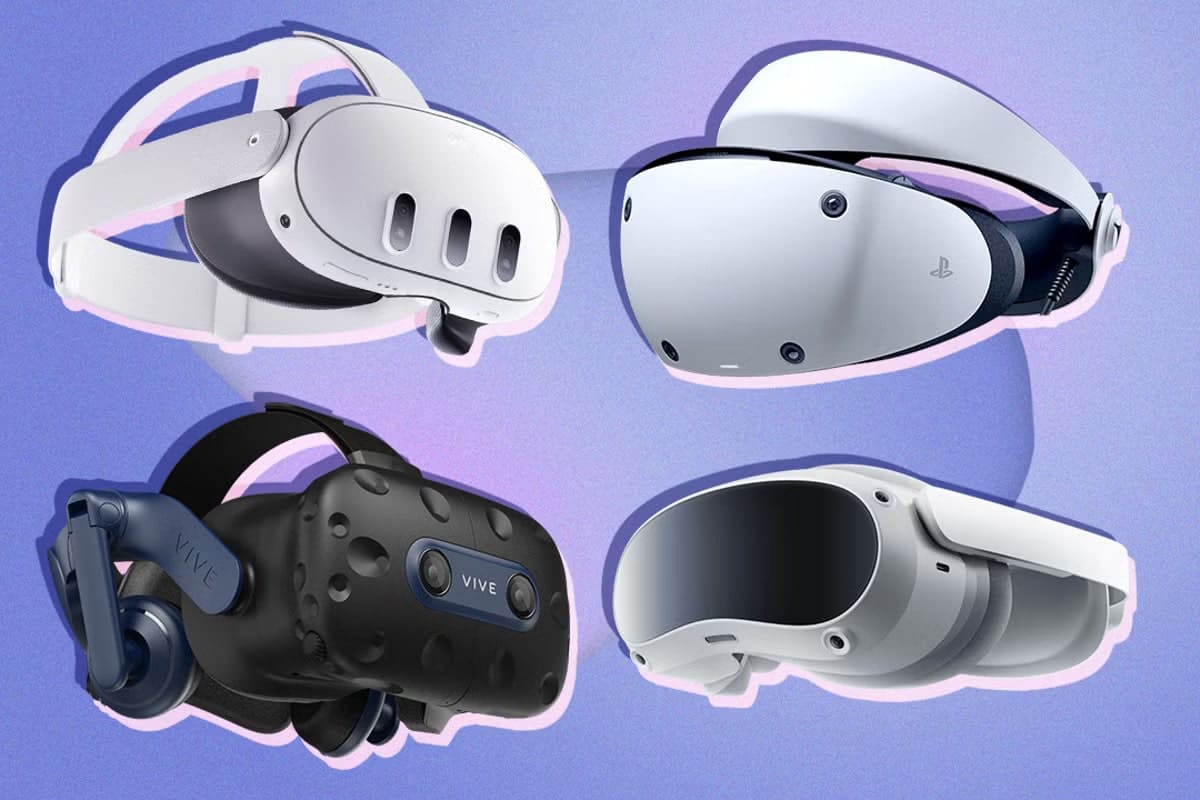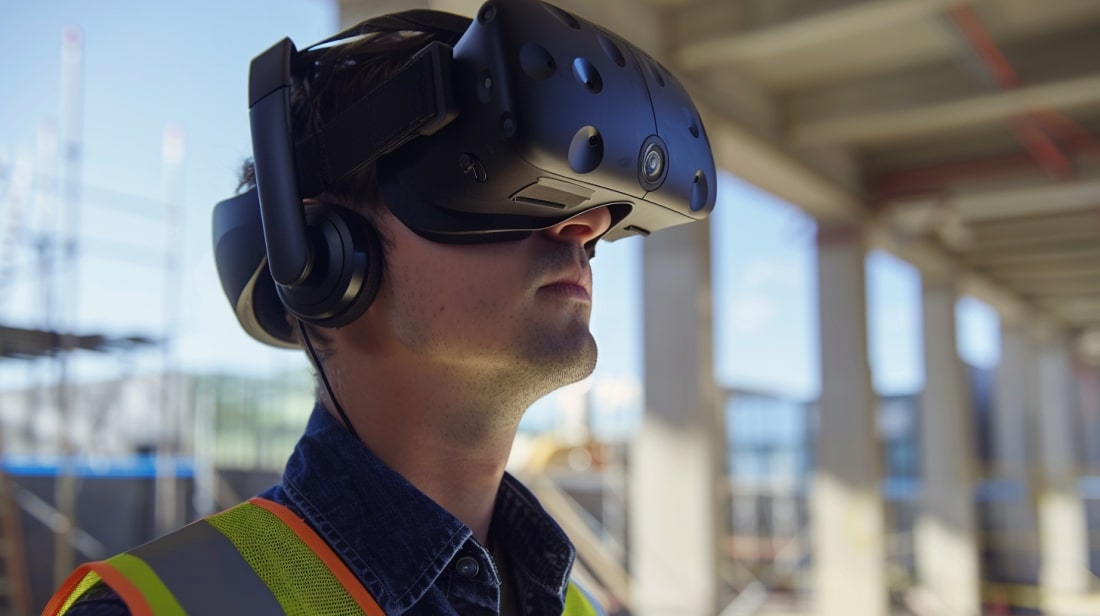
Why Virtual Reality in Construction Isn't Just Sci-Fi Anymore?
It’s kind of funny to think about how Virtual Reality, a concept that once felt like pure science fiction, is now laying the groundwork for real-world buildings. I still remember the first time I put on a VR headset at a tech expo; it was mostly about gaming then, but wow, has it come a long way!
From Gaming Rooms to Construction Sites:
Last summer, I had a chat with a construction project manager, Mike, who couldn’t stop talking about how VR has changed the game for his projects. He showed me through a headset exactly what he meant: You could literally walk through a building that hadn’t been built yet.
You could turn around corners, inspect staircases, and even look out of windows—all before the foundation was even laid. It’s not every day you see something that blows your mind, but this was one of those moments.
The Real Impacts:
What’s really impressive is not just how VR lets you walk through unbuilt buildings, but also how it helps in making those buildings safer and more efficient.
Mike explained that with VR, they can simulate emergency situations and design buildings with better safety features. Plus, it cuts down on costly mistakes. Imagine finding out that a planned staircase clashes with a load-bearing wall without having to waste materials or, worse, compromise the building’s integrity!
Understanding VR in Construction: The Essentials
1. What's VR Anyway?
Remember when VR was just a cool feature you’d find at an arcade or something you’d read about in sci-fi novels?
Well, it’s gotten a whole lot more practical since then, especially in the construction industry. At its core, VR is all about creating a computer-generated environment that you can interact with as if you were there in real life.
You wear a headset, and suddenly, you’re walking through a digitally constructed building that hasn’t even been built yet.

Table of Contents
Exploring the Game-Changing Applications of VR in Construction
1. BIM Review
You might wonder, “Why go through all this trouble?”
Imagine catching a design flaw early in the process, before it’s a costly, concrete mistake. Or think about showing a client a choice of designs in real-time, swapping out finishes and fixtures at the touch of a button.
Twin Reality lets you do all this and more using TwinBIM AR. It’s about testing, exploring, and perfecting in a way that traditional blueprints and even digital 3D models can’t match.
2. Training Without the Risk
VR isn’t just about pretty pictures; it’s a vital tool for safety training. With VR simulations, workers can experience hazardous scenarios in a controlled environment.
Think about practicing the protocol for a high-rise fire or navigating through structural collapses without the real-world risk.
These training sessions aren’t just safer; they’re repeatable and can be updated with the latest safety standards, ensuring that the crew is well-prepared for anything.
3. Collaborative Planning and Clash Detection
VR takes the guesswork out of interpreting complex blueprints and models. Teams can collaboratively explore and manipulate 3D models of their projects, identifying and resolving clashes between mechanical, electrical, and plumbing systems before they become expensive fixes.
This kind of collaboration can drastically cut down on communication errors and streamline the planning process, making sure everyone is on the same page.
4. Enhanced Client Presentations and Approvals
Gone are the days of flat floor plans and small model kits. With VR, clients can truly visualize and interact with the design in full scale, making it easier for them to provide feedback and approvals.
It’s a powerful way to involve clients in the design process, ensuring their satisfaction and reducing costly changes once construction has begun.
5. Remote Site Access
Sometimes stakeholders can’t be on-site as often as they might like. VR can bring the site to them.
By wearing VR headsets, they can take a tour of the construction site remotely, inspecting progress and making decisions without ever having to travel.
This not only saves time but also keeps the project moving forward smoothly.
6. Pre-construction Visualization for Marketing
Before the first stone is laid, you can start marketing your project with VR.
Real estate developers can offer potential buyers a virtual tour of their future homes or offices, complete with customizable options for finishes and layouts.
This not only boosts pre-sales but also builds excitement and confidence among buyers.
7. Simulating Real-World Conditions
What will the acoustic be like in the new auditorium?
How will the late afternoon sun affect the temperature in the summer? VR can simulate environmental factors and real-world conditions, allowing engineers and designers to optimize buildings according to how they will be used in different seasons and times of day.
8. Virtual Prototyping of Building Materials
VR enables the prototyping of building materials and structures within a virtual environment.
Test different materials and structural designs under various conditions to see how they hold up. This can lead to innovations in materials and building techniques that might have been too costly or risky to trial in the real world.
9. Equipment and Maintenance Training
Not only can VR help in building structures, but it can also be an invaluable tool in maintaining them.
VR simulations can train maintenance staff on complex systems within a building, from HVAC to electrical grids, all without disrupting the actual systems or placing staff at risk.
10. Disaster Preparedness and Emergency Evacuation Drills
Finally, VR can play a crucial role in preparing for emergencies.
Virtual reality drills for disaster preparedness, like earthquake or flood scenarios, can provide invaluable practice for building occupants, potentially saving lives during actual events.
Unpacking the Real Benefits of VR in Construction
1. Say Goodbye to Costly Mistakes
Imagine this: you’re halfway through building a new shopping center, and you realize that the electrical conduits clash with the plumbing.
It’s a nightmare scenario, right? Well, VR can save you from such expensive headaches. By allowing you to visualize and interact with every aspect of your project in a virtual environment, VR helps identify potential problems before they manifest in reality, slashing unnecessary costs and delays.
2. Boosting Project Efficiency
Time is money, especially on a construction site. With VR, project teams don’t just plan their work better; they execute it with precision you’d typically expect from a Swiss watch.
By streamlining the design, review, and approval processes, VR cuts down on the back-and-forth that usually clogs up a project’s arteries. Everything from initial designs to final tweaks can be handled faster and more efficiently.
3. Enhancing Safety Training
Construction sites can be dangerous, but VR is changing the safety game. It offers a risk-free platform for training workers in a realistic 3D environment, where they can learn to handle hazardous situations without the actual risk.
Whether it’s navigating through virtual high-rises or practicing emergency procedures, VR training means workers are better prepared, and fewer accidents happen.
4. Improving Quality Control
Quality in construction isn’t just about adhering to standards—it’s about exceeding them.
VR’s detailed visualizations allow for meticulous inspection of materials, structures, and finishes. This capability ensures that every element of a project is executed to perfection, meeting both the regulatory standards and the high expectations of clients.
5. Revolutionizing Client Interactions
Ever tried to explain a complex design detail over a flat blueprint? It can be frustrating.
VR offers a dynamic and interactive way for clients to explore their projects, leading to quicker decisions and approvals. Plus, when clients can experiment with design changes in real-time, satisfaction soars, and trust builds. This means fewer changes during construction, which translates to lower costs and happier clients.
6. Expanding Marketing Potential
VR isn’t just a tool for building—it’s also a powerhouse for selling.
Developers can market properties more effectively by offering potential buyers a virtual tour of their future homes or offices. This immersive experience can captivate buyers and spur sales long before the real construction completes.
7. Facilitating Remote Collaboration
In today’s globalized world, the key project stakeholders might be continents apart.
VR bridges this gap beautifully. Remote teams can collaborate seamlessly, inspecting project progress virtually and making decisions without needing to be physically present.
This not only speeds up the construction process but also saves on travel costs and reduces the project’s carbon footprint.
8. Enabling Comprehensive Pre-construction Analysis
With VR, you can test building performance under various scenarios before breaking ground.
From natural light patterns throughout the day to energy efficiency models, VR allows architects and engineers to refine their designs to account for every variable, ensuring the building performs just as well in practice as it does in theory.
Navigating the Rough Patches: Challenges and Limitations of VR in Construction
1. The Price Tag
Let’s cut to the chase—VR isn’t cheap.
From high-end hardware to sophisticated software and training, the initial setup for a VR system can be a real wallet-drainer.
For small to mid-sized construction firms, this cost can be a significant barrier to entry. While the investment might pay off in the long run, the upfront costs are not just pennies, especially when you’re trying to keep a tight budget.
2. Technology Integration Headaches
Imagine trying to play a brand new video game on an old console—it just doesn’t work. Similarly, integrating VR into existing construction systems can be like fitting a square peg in a round hole.
Many construction firms use legacy systems that are not immediately compatible with the latest in VR tech. Upgrading these systems can be costly and time-consuming.
3. The Learning Curve
It’s not all plug-and-play with VR. There’s a learning curve involved that can be steep, particularly for teams that aren’t as tech-savvy.
Implementing VR means training employees, which is another investment of time and resources. If the training isn’t managed correctly, it can lead to frustration and even resistance among team members who might prefer the old ways of doing things.
4. Maintenance and Upkeep
Owning a VR setup isn’t a one-time cost. Keeping the system up-to-date with the latest software updates and hardware tweaks is essential to ensure smooth operation.
Regular maintenance can rack up costs and require additional tech support that not all construction firms are prepared to handle.
5. Data Security Concerns
With great technology comes great responsibility, particularly regarding data security.
VR systems handle a ton of sensitive data—from architectural plans to client information. Ensuring this data is secure, especially when transmitted over networks, poses a significant challenge and requires robust cybersecurity measures.
6. Physical Side Effects
Spending hours in a virtual environment can be disorienting and sometimes physically uncomfortable for users.
Issues like motion sickness, eye strain, and general disorientation can affect productivity and deter users from adopting the technology fully.
7. Legal and Regulatory Hurdles
As with any emerging technology, there’s a maze of legal and regulatory issues to navigate. From copyright laws protecting virtual content to regulations around data use and privacy, the legal landscape for VR is complex and still evolving.
Construction firms need to tread carefully to ensure they don’t run afoul of the law.
8. Overreliance and Misuse
There’s a risk that VR could be seen as a silver bullet for all construction challenges, which it’s not. Overreliance on VR at the expense of traditional skills and common sense can lead to poor decision-making. Moreover, if not used correctly, VR can contribute to a disconnect between the virtual designs and the practical realities of construction.
1. A New Plant Setup for Chocolate Company
Project Overview:
In India, a Big Chocolate International company expanding with adding of new Plant unit stands as a testament to the power of BIM VR in construction. Before a single foundation was poured, the entire project was visualized in VR, allowing for a comprehensive pre-construction review that saved millions in potential errors.
The VR Impact:
Designers and Engineers conducted virtual review with other teams gathering required edits and feedback online. This collaborative process not only enhanced client satisfaction but also streamlined the design phase, reducing the need for costly revisions during construction.
2. A New Plant setup for Data Centre
Project Overview:
Microsoft is setting up a new Data Center in India. VR BIM review became the linchpin for success, allowing engineers to review on issues and solving it fast.
The VR Impact
By reviewing the BIM in VR the engineering team can easily find issues with Clashes or if any services like electrical trays or fire pipes placements easily.
3. Safety First: The VR Training Program
Project Overview: A multinational construction firm implemented a VR safety training program across all its sites worldwide. The program simulated high-risk situations that workers could face, such as working from heights or managing machinery malfunctions.
The VR Impact
The immersive training not only improved worker preparedness but also significantly reduced accidents on-site. The firm saw a 40% drop in workplace incidents within a year, showcasing VR’s potential in enhancing occupational safety.
4. Revamping Historical Restoration
The restoration of the historic Montague Hall required delicate craftsmanship and precise adherence to architectural integrity. VR was used to simulate the entire restoration process, offering a detailed preview of the work needed and allowing for accurate material testing.
The VR Impact:
VR enabled architects to experiment with different restoration techniques and materials in a controlled virtual setting, ensuring that the actual restoration maintained the historical accuracy and aesthetics of the hall. This use of VR helped secure funding by demonstrating the project’s viability and end result to investors.
5. The Eco-Friendly Complex
Project Overview: In an effort to promote sustainable construction, an eco-friendly residential complex in Norway was designed entirely using VR. The project focused on minimizing environmental impact while maximizing energy efficiency.
The VR Impact:
Real Success Stories: Case Studies of VR in Construction
Through VR, the project team was able to integrate solar panels, green roofs, and other sustainable features effectively into the complex’s design. The virtual tests conducted for sunlight exposure and thermal dynamics allowed the team to optimize the building’s environmental performance before construction commenced.
Looking Ahead: Future Trends in VR for Construction
1. Smarter Integration with AI and IoT
As we move forward, VR is set to become even smarter by pairing up with Artificial Intelligence (AI) and the Internet of Things (IoT). Imagine VR environments that not only let you walk through a virtual construction site but also provide real-time data on everything from structural loads to environmental conditions, all powered by AI analytics and IoT sensors. This integration will enable more predictive and adaptive construction processes, potentially saving time and reducing waste.
2. Enhanced Mobile Accessibility
Right now, experiencing VR might still require some hefty hardware that’s not exactly pocket-sized. However, the future is looking lean and mobile. As VR technology becomes more integrated with smartphones and portable devices, remote access to VR construction sites will become as simple as pulling out your phone. This means more flexibility in managing projects and making decisions on-the-go, ensuring that project managers and clients can stay informed and involved, no matter where they are.
3. More Realistic Simulations with Advanced Haptics
The touch and feel of materials are crucial in construction, and VR is catching up on this front. With advancements in haptic feedback technology, VR simulations in construction will not only show you how things look but also how they feel. This means architects and clients can experience the texture of the flooring, the resistance of a door handle, or the solidity of a marble countertop, all within a virtual space. These tactile experiences will enhance the design and decision-making processes, making VR sessions almost as informative as real-life inspections.
4. Widespread Adoption in Training and Safety Programs
VR’s potential to enhance training and safety protocols is enormous and only beginning to be tapped. In the future, it’s likely that VR safety training will become a standard industry practice, with scenarios tailored to every aspect of construction work. From electrical safety to high-altitude work, VR will prepare workers for the field with unprecedented effectiveness, reducing workplace accidents and increasing overall site safety.
5. Collaborative Virtual Workspaces
As remote work becomes more common, VR is expected to facilitate virtual workspaces where designers, architects, and engineers can collaborate from anywhere in the world. These virtual rooms will allow real-time collaboration on models, with changes visible instantaneously, much like editing a document together online. This could dramatically speed up the design process and foster a more collaborative industry culture.
6. Integration with Legal and Regulatory Processes
Navigating the complex legal landscape of construction can be daunting, but VR might just make it easier. Future applications could simulate legal scenarios, helping project teams understand compliance in a visually intuitive way. This would not only aid in planning but could also serve as a compelling tool during regulatory reviews, making it easier to obtain approvals and ensure compliance.
7. Breakthroughs in Environmental and Urban Planning
Lastly, as cities become smarter, VR will play a pivotal role in urban and environmental planning. By simulating large-scale models of urban areas, VR will help planners and the public visualize and test the impacts of various projects, from new parks to revamped transportation systems, ensuring that new developments are beneficial for all.
Bringing It All Together: The Future of Construction is Virtual
As we’ve explored the vast landscapes of Virtual Reality in construction, from its practical applications and significant benefits to the challenges it faces and the exciting future trends, one thing becomes crystal clear: VR is not just a technological novelty—it’s becoming a fundamental part of the construction industry’s future.
More Than Just a Tool
VR started as a way to play games and escape reality, but it has grown into so much more. In construction, it’s a bridge between the imaginative and the tangible, helping turn creative visions into livable structures safely and efficiently. The ability to walk through a building before it’s even built, to train in hazardous conditions without risk, and to catch design flaws before they become costly mistakes—these are no small feats. And they’re just the beginning.
The Human Touch
What’s truly exciting is how VR empowers people. From architects and engineers to clients and everyday workers, VR is democratizing the construction process. It’s giving people tools to collaborate, learn, and create like never before, which not only leads to better buildings but also to a stronger, more inclusive industry.
Looking Forward
As we look to the future, the integration of VR with AI, IoT, and other emerging technologies promises to make construction smarter, safer, and more efficient. The challenges are real, particularly when it comes to costs and the complexity of technology integration, but the potential benefits far outweigh these hurdles.
The construction sites of tomorrow will be shaped by the decisions we make today regarding VR and its role in our industry. As this technology continues to evolve, it will undoubtedly bring more profound changes to how we design, build, and view construction projects.
Embracing Change
So, let’s strap on our VR headsets and step confidently into the future, armed with the knowledge that while the world of construction is changing, it’s changing for the better. The virtual revolution in construction is here, and it’s here to stay, reshaping our landscapes and our possibilities.


